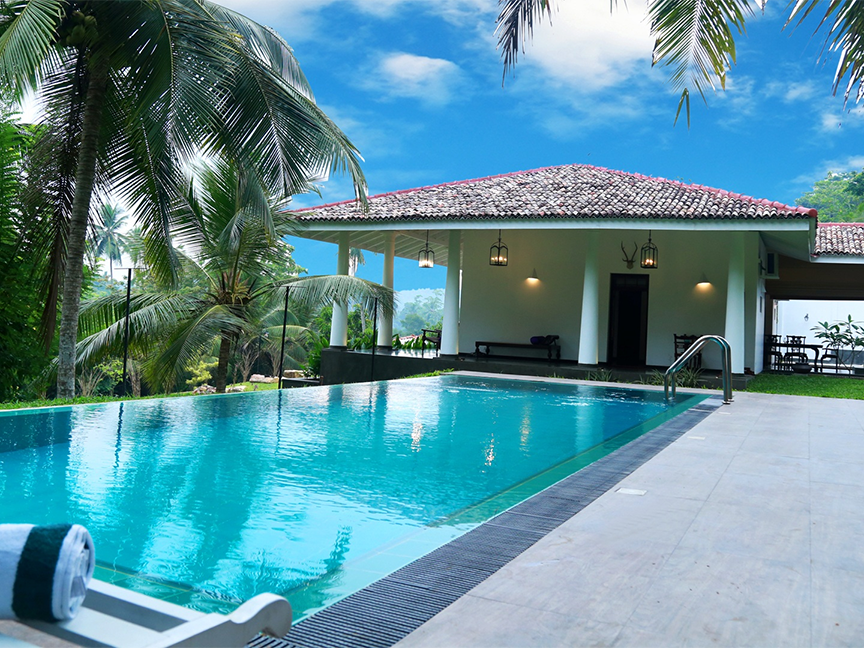
Visit Our Sponsors |
|
|
|
|
|
|
|
|
|
|
|
|
|
|
|
|
|
|
|
|
|
|
|
|
|
|
|
|
|
|
|
|
|
|
|
|
|
|
|
|
|
|
|
|
|
|
|
|
|
|
|
|
|
|
|
|
|
|
|
|
|
|
|
|
|
|

In March 2020, when the onset of the coronavirus pandemic shut down most parts of the country, Greg Darvin wasn’t sure when his East Hampton, N.Y.-based company, Pristine Pools, would find their next project: “I said, ‘Who is ever gonna build a luxury pool in the Hamptons again?’”
More than two years later, the question is still relevant, but for different reasons. Demand for Hamptons property and local services has skyrocketed — there were 671 homes for sale in the area at the end of March, the fewest on record in the 17 years that appraiser Miller Samuel Inc. and brokerage Douglas Elliman Real Estate have been tracking the data.
As a result, Darvin and other Hamptons-based builders and contractors are having trouble filling current contracts and are already stressed about next year. “If you haven’t planned your 2023 pool yet, you’re too late,” says Darvin.
Typically, clients wouldn’t commit until they were ready to start the project. “Now we book one year ahead, and we immediately go into hard contract.” Otherwise, Darvin says, he won’t get the raw materials — everything from stone and tiles to pumps and heaters.
Before the pandemic, he didn’t inventory anything. “Now we buy anything we can find and store it,” he says.
Darvin and his roughly 40 employees build from 10 to 30 pools a year that include those constructed from the ground up as well as renovations. His projects start at $100,000. (He keeps his client list private.)
Since last October dealers of pool pumps nationwide have been booked well into the third quarter. But Darvin now also stocks basics such as grout and bagged cement partly to guarantee availability and to insulate himself against ongoing price increases.
Ubiquitous supply chain problems and labor shortages are constraining his business. “Bluestone used to be the easiest stone in the Northeast to source. Now, it’s almost nonexistent. Quarries haven’t had the workforce,” says Darvin.
He’s seen the price of some products like pool liners and covers go up 40% to 50% over the past 12 months. “For most of my customers, [that increase] doesn’t mean that they won’t go on vacation. But we’re all feeling it,” he says.
The East End’s pool problems go beyond the supply chain, says Mark McAteer, chief executive officer of the Laurel Group, a landscape design company that also does general contracting. “There have been spot shortages of pool heaters, which is related to the freeze in Texas [in 2021]. They needed a million heaters. Every single heater in Texas had to get replaced.” Some estimate that more than 20,000 pools were damaged in the ice storm.
Soaring demand is also putting pressure on businesses like his to get work done on all parts of a home including its pool; as a house becomes more valuable, an owner believes that they should put more money into it. “I tell people, time is your enemy,” says McAteer. “You’re better off making a prompt decision because prices are not going down.”
But local building departments are similarly overwhelmed. “What used to take four weeks [to get approved] now takes 90 days,” says McAteer. “If we submit something in January, and [those in the town building department] still haven’t read it in April,” then work stops. “I can’t say for sure you’ll be swimming next summer.”
Greg D’Angelo, president of Greg D’Angelo Construction in Wainscott, N.Y., agrees that the challenges to getting pools built are myriad. “If you’re a homeowner and you’re not planning your swimming pool right now, you won’t have it for next summer because of supply chain and labor issues but also building permit issues. Everything is backed up across the board.”
Regarding a 12,000-square-foot house he’s building in East Hampton village, D’Angelo says, “they will have a pool next summer, because it’s been planned for a while.” But the scramble for everything to outfit the houses has gotten more intense. “There are $150,000 worth of appliances in that East Hampton house,” he says. “We purchased whatever brands we could get. The appliance guy will try to trade them for what he needs.”
D’Angelo notes that costs have gone up at least 30%. “I’ve never seen anything like this in my 30-year history.”
RELATED CONTENT
RELATED VIDEOS
Timely, incisive articles delivered directly to your inbox.

